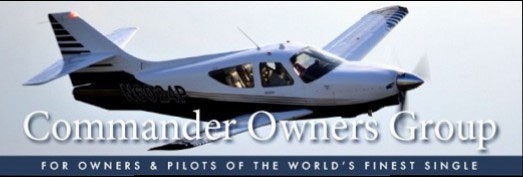cschuler123
New member
Mesa, AZ
- Aircraft Year
- 1976
- Aircraft Type
- 112 Hot Shot
- Reg Number
- N509CA
- Serial Number
- 409
Re: Commander glide ratio
Airframe is good yes, but we need springs on the seats....If the seats would've had springs like the Cessna and Piper, my wife and I would not have broken our backs, I don't think.
You just didn't have much time Clint. The Forefight guides won't even show up until your at least 200 ft agl so no value. But what is good to know is how strong an airframe we have. Safe flying.
Sent from my iPhone using Tapatalk
Airframe is good yes, but we need springs on the seats....If the seats would've had springs like the Cessna and Piper, my wife and I would not have broken our backs, I don't think.
